Light and sound, space and music – Christopher Bauder and Robert Henke continue to explore immersive integrated AV form. Here’s a look into how they create, following a new edition of their piece Deep Web.
Here’s an extensive interview with the two artists by EventElevator, including some gorgeous footage from Deep Web.
Deep Web premiered in 2016 at CTM Festival, but it returned this summer to the space for which it was created, Berlin’s Kraftwerk (a former power plant). And because both artists are such obsessive perfectionists – in technology, in formal refinement – it’s worth this second trip.
Christopher (founder of kinetic lighting firm WHITEvoid) and Robert (also known as Monolake and co-creator of Ableton Live) have worked together for a long time. A decade ago, I got to see (and document) ATOM at MUTEK in Montreal, which in some sense would prove a kind of study for a work like Deep Web. ATOM tightly fused sound and light, as mechanically-controlled balloons formed different arrangements in space. The array of balloons became almost like a kind of visualized three-dimensional sequencer.
Deep Web is on a grander scale, but many of the basic elements remain – winches moving objects, lights illuminating objects, spatial arrangements, synchronized sound and light, a free-ranging and percussive musical score with an organic, material approach to samples reduced to their barest elements and then rearranged. The dramaturgy is entirely abstract – a kind of narrative about an array and its volumetric transformations.
In Deep Web, color and sound create the progression of moods. At the live show I saw last weekend, Robert, jazzed on performance endorphins, was glad to chat at length with some gathered fans about his process. The “Deep Web” element is there, as a kind of collage of samples of information age collapsed geography. The sounds are disguised, but there are bits of cell phones, telecommunications ephemera, airport announcements, made into a kind of encoded symphony.
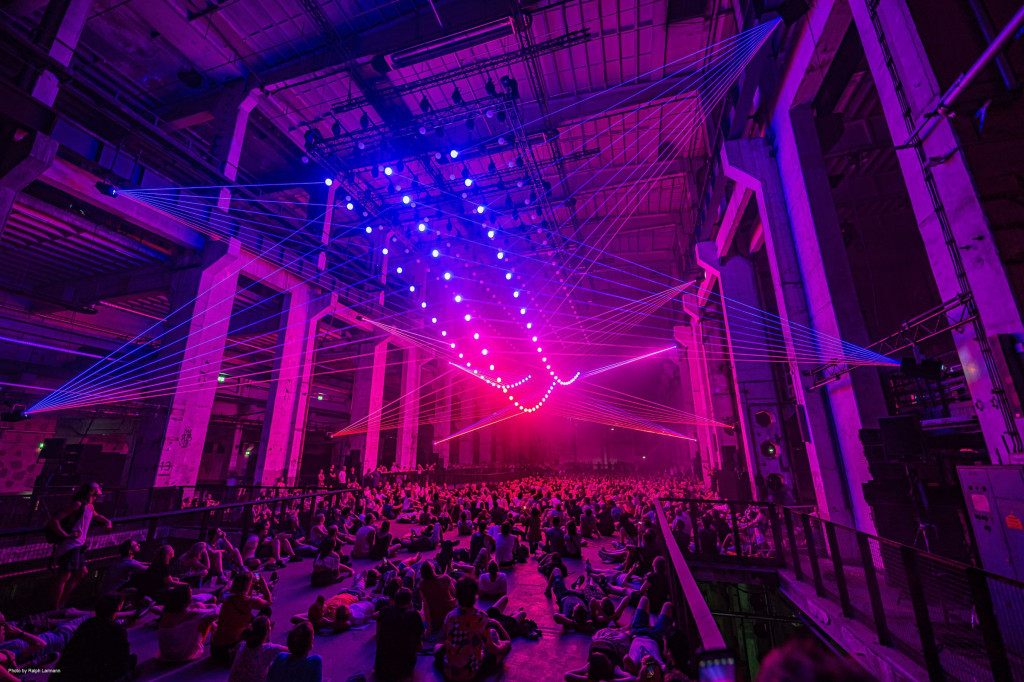
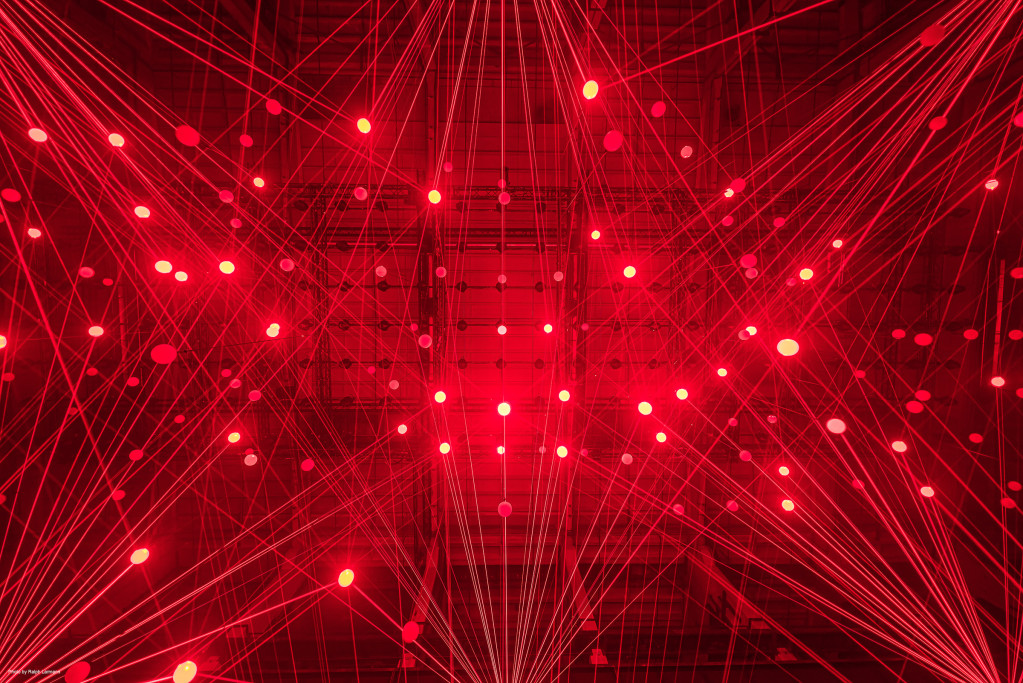
Whether you buy into this seems down to whether the artists’ particular take tickles your synesthesia and strikes some emotional resonance. But there is something balletic about this precise fusion of laser lines and globes, able to move freely through the architecture. Kraftwerk will again play host later this month to Atonal Festival, and that meeting of music and architecture is by contrast essentially about the void. One somber vertical projection rises like a banner behind the stage, and the vacated power plant is mostly empty vibrating air. Deep Web by contrast occupies electrifies that unused volume.
I spoke to Christopher to find out more about how the work has evolved and is executed.
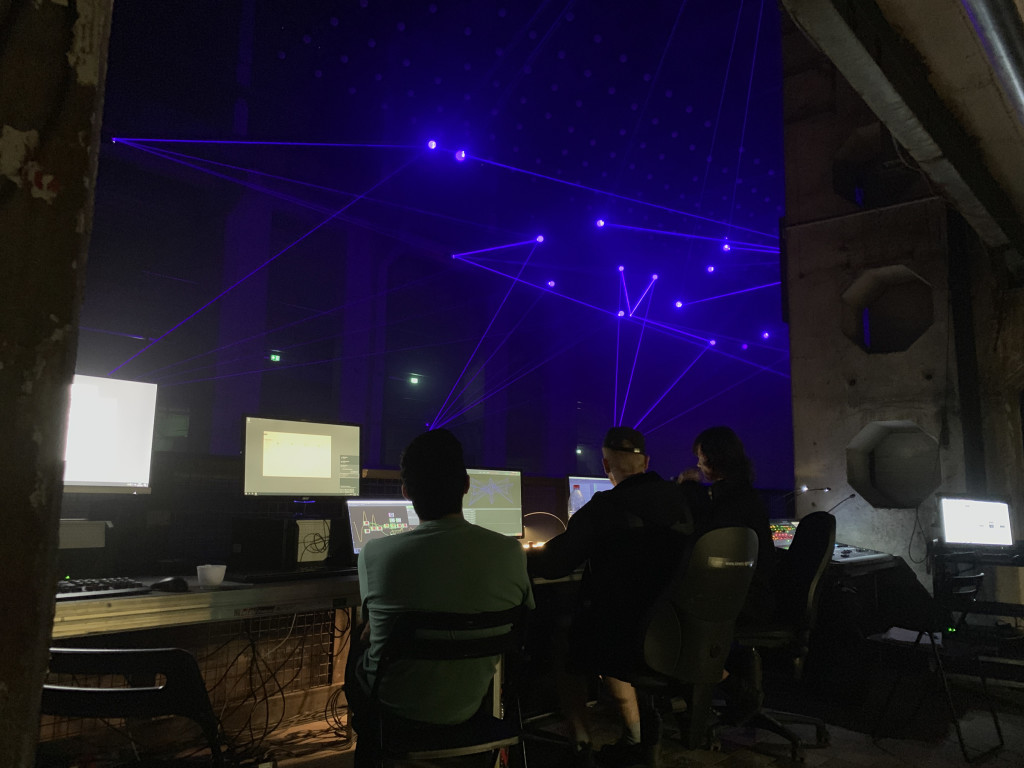
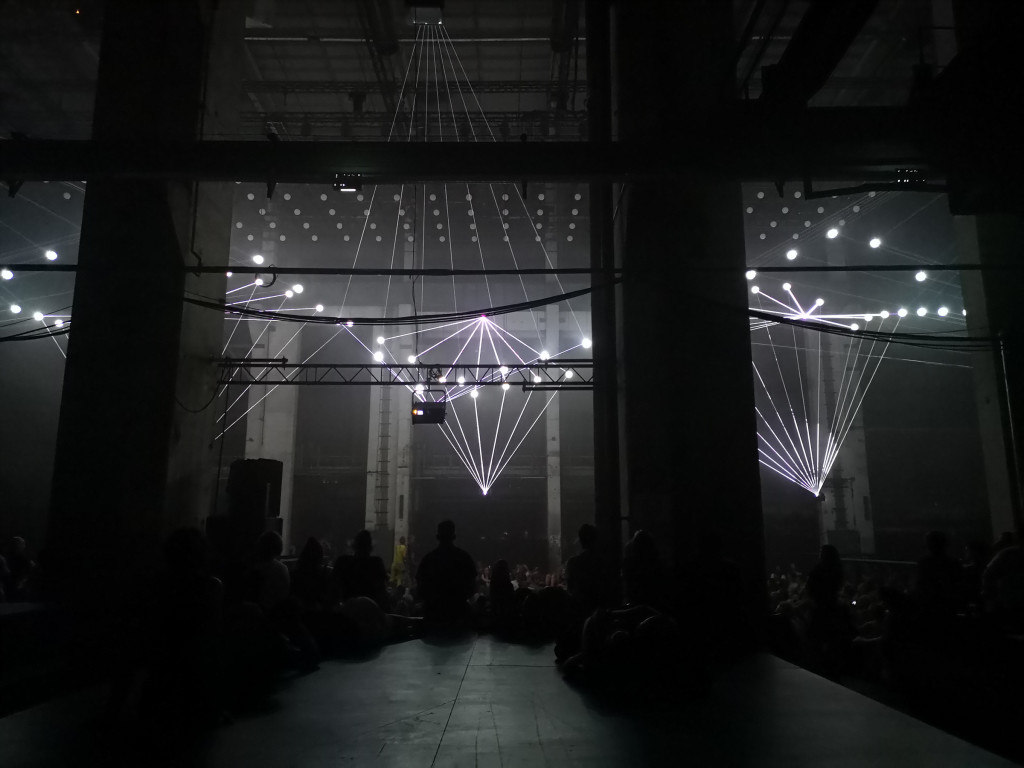
Robert’s music is surprisingly improvisational in the live performance versions of the piece. You could feel that the night I was there – even as Robert’s style is as always reserved, there’s a sense of flowing expression.
To create these delicate arrangements of lit globes and laser lines, Christopher and his team at WHITEvoid plan extensively in Rhino and Vektorworks – the architectural scoring that comes before the performance. The visual side is controlled with WHITEvoid’s own kinetic control software, KLC, which is based on the industry leading visual development / dataflow environment TouchDesigner.
Robert’s rig is Ableton Live, controlled by fader and knob boxes. There is a master timeline in Live – that’s the timeline bit to which Robert refers, and it is different from his usual performance paradigm as I understand it. That timeline in turn has “loads of automation parameters” that connect from Live’s music arrangement to TouchDesigner’s visual control. But Robert can also change and manipulate these elements as he plays, with the visuals responding in time.
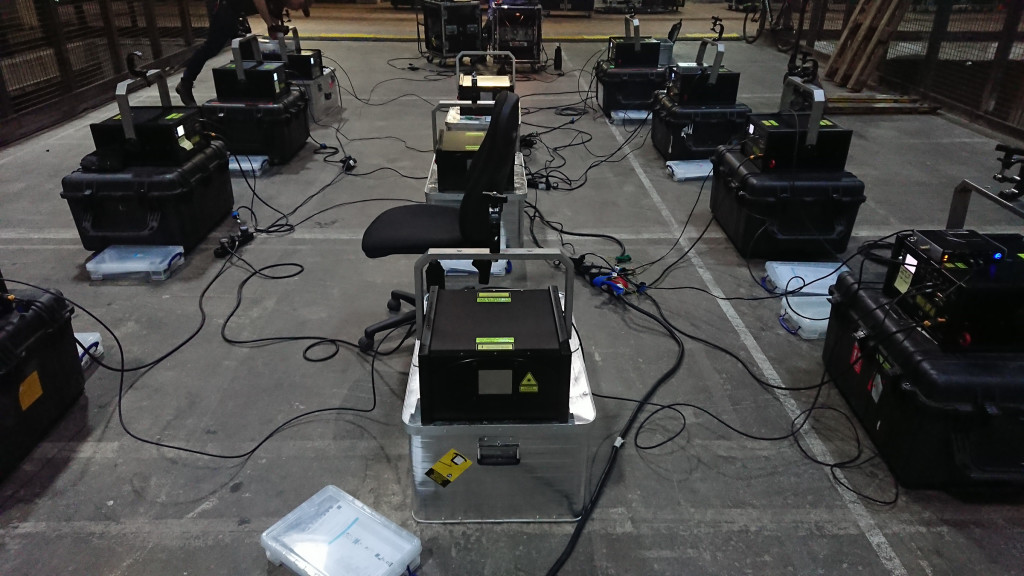
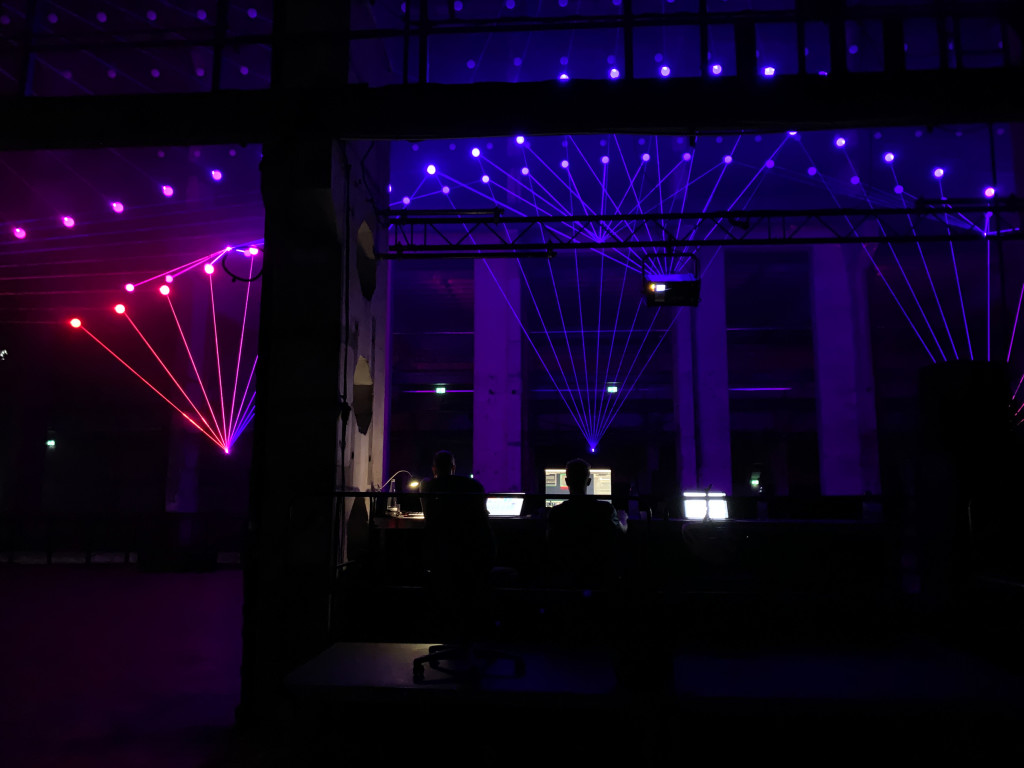
Different visual scenes load as presets. Each preset then has different controllable parameters – most have ten with realtime operation, Christopher tells CDM.
“[Visual parameters] can be speeds, colors, selection of lasers, individual parameters like seed number, range, position, etc.,” Christopher says. “In one scene, we are linking acceleration of a continuously running directional laser pattern to a re-trigger of a beat. So options are virtually endless. It’s almost never just on/off for anything – very dynamic.”
This question of light and space as instrument I think merits deeper and broader explanation. WHITEvoid are one of a handful of firms and artists developing that medium, both artistically and technically, in a fairly tight knit community of people around the world. Stay tuned; I hope to pay them another visit and talk to some of the other artists working in this direction.
You can check their work (and their tech) at their site:
Christopher also provided some unique behind-the-scenes shots for us here, along with some images that reveal some of the attention to pattern and form.
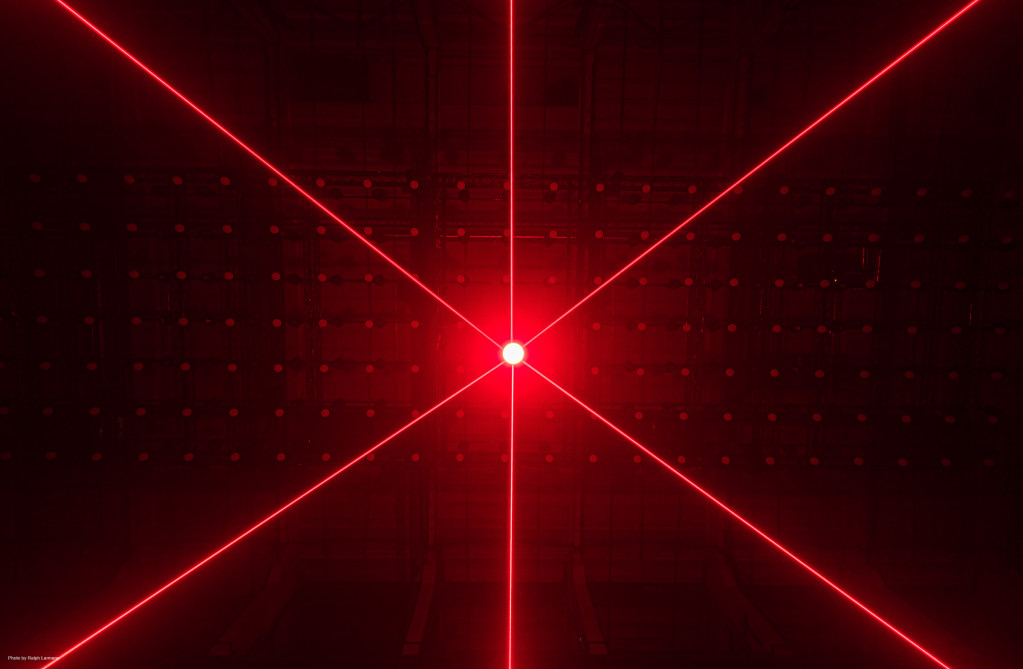
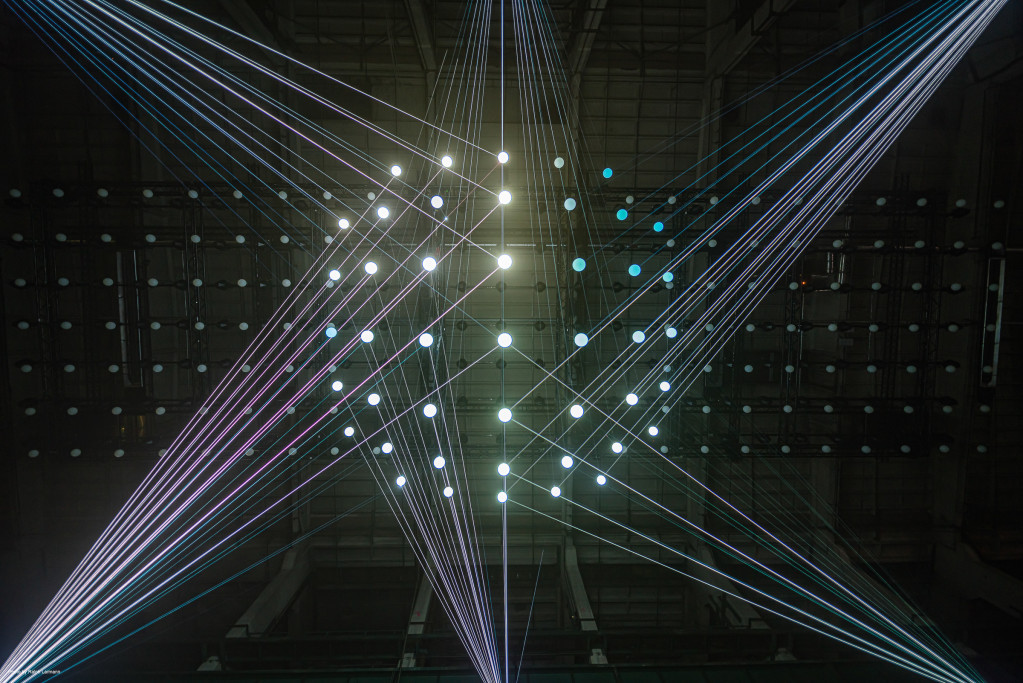
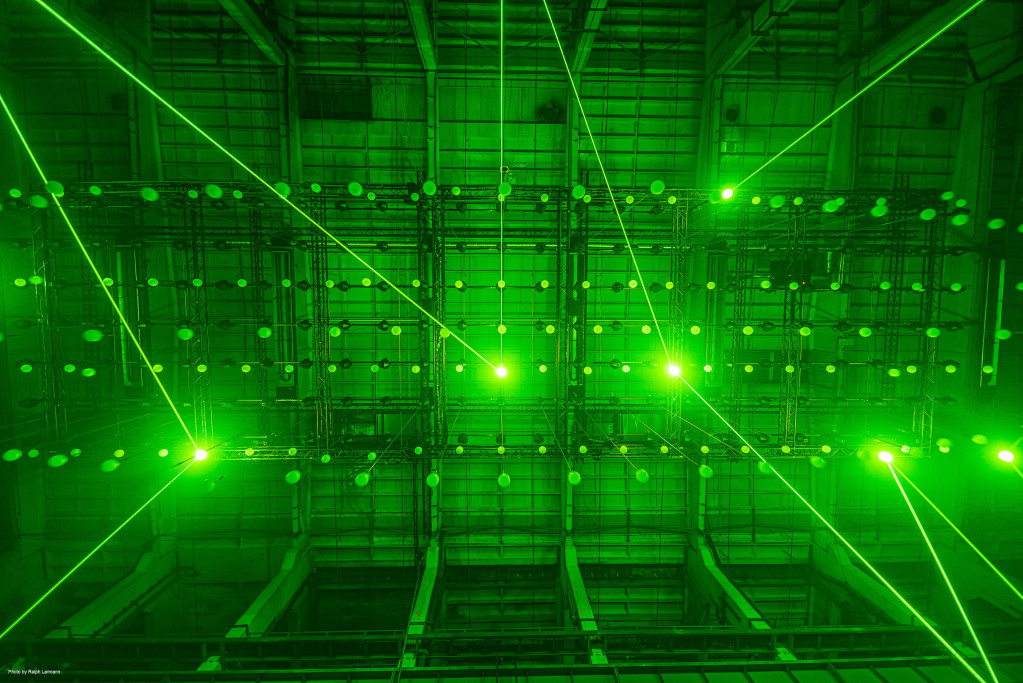
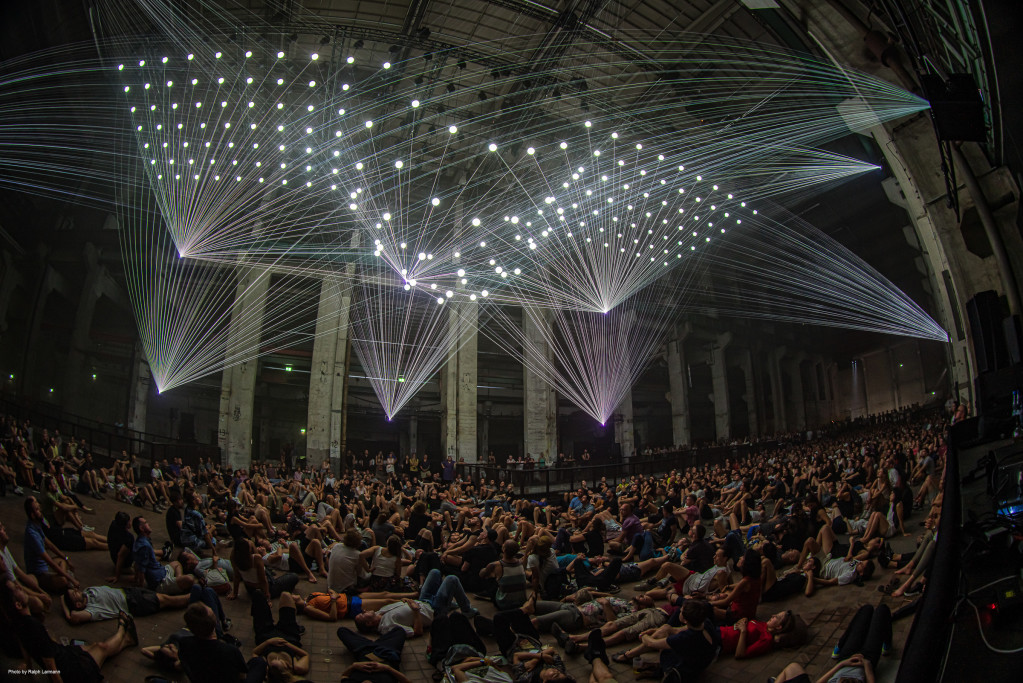
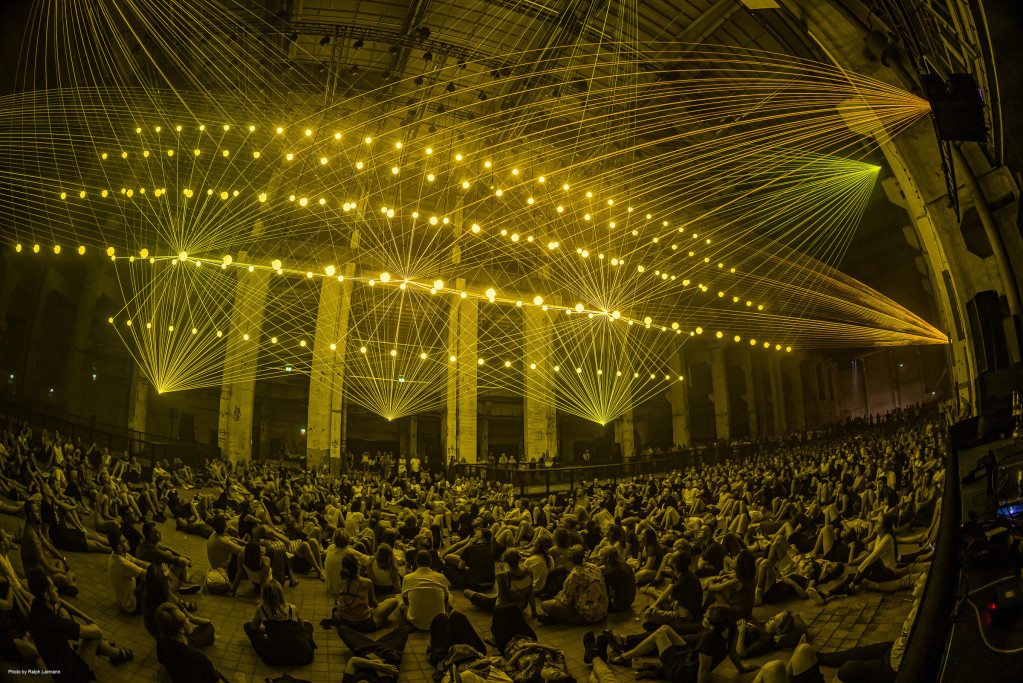
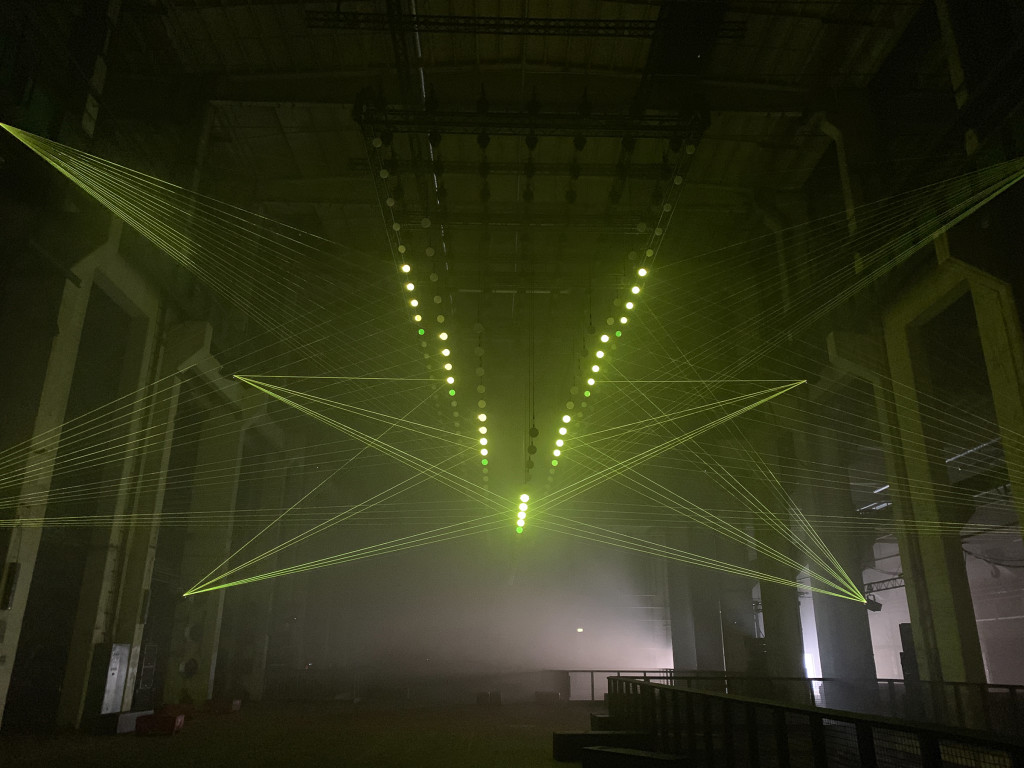
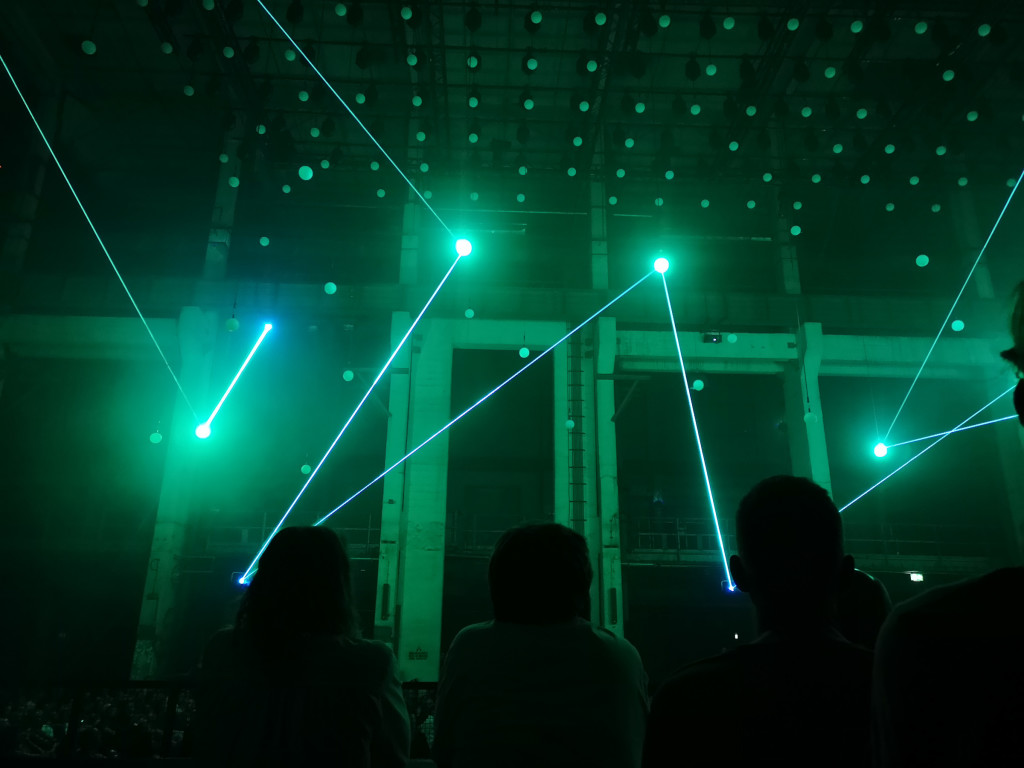
Previously: